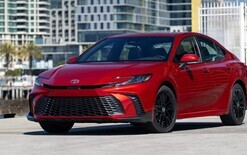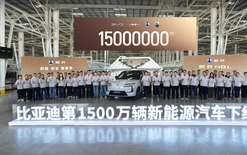Plan needed for green fleet

I’m not wishing to be alarmist, but here’s the deal. The European Union has been extremely rigorous in its desire to lower emissions.
Up until 2020, fleet-emission targets there were 130gCO2/km and most, if not all, brands selling into Europe seemed to achieve this.
Since January 1, 2020, this target became a more challenging 95gCO2/km. Over the next five years or so, it will reduce further to about 75g with massive financial implications for carmakers if they don’t achieve it. An independent report by PA Consulting has put the potential for fines at about €12.5 billion, or about NZ$22b, which is eye-watering.
Pure fossil-fuelled cars are unable to contribute much to this target hence the move to more low-emission vehicles, such as pure electric, plug-in hybrids and hydrogen.
Failing to meet these targets will mean one of two outcomes – pay a huge fine resulting in lower shareholder returns and or higher prices to recover the costs from customers, both of which are unpalatable. The other option is to not sell products in what’s arguably one of the most profitable regions of markets for marques.
The EU has made it clear it isn’t interested in any deals about delaying the introduction of these measures. This explains why the likes of Porsche, Ferrari, Audi, BMW, Daimler and the Volkswagen Group are advancing new models that are mostly battery electric or plug-in hybrids. They get it and are moving rapidly towards implementing a range of low-emission vehicles.
All very interesting, I hear you say, but what’s the point? The point is this. Many European countries have signalled a ban on pure fossil-fuel and non-plug-in hybrid vehicles between 2025 and 2040.
This includes the UK, which has stated this will happen from 2032 – and that is not far away in model lifecycle terms. And being one of the largest right-hand-drive markets, it will likely influence models that will be available in New Zealand because our country is a technology taker.
Little has been said about the future make-up of our fleet, which is surprising since we have international and local commitments to decarbonise transport and achieve net-zero carbon by 2050.
Hence my question, what’s the plan? It seems the past three years of the coalition government have brought little or no change to the National government’s initiatives from 2016.
To stimulate debate, Drive Electric has pushed out a call to action to the main political parties contesting the general election. Ambitiously, it suggests New Zealand’s fleet will need to have 250,000 EVs on our roads by 2025 to have any hope of achieving our net zero-carbon target.
It is based on this country needing to reduce its emissions about 60 per cent by 2030 to stay within the 1.5 degrees of warming, which is the target in the Zero Carbon Act. It is premised on five key actions.
1: Developing a bipartisan pathway for the transport sector to deliver New Zealand’s climate-change objectives. Transport can make an important contribution to zero-carbon ambitions, but there needs to be clear targets and a well-defined transition pathway that engages industry and has cross-party support.
2: Encouraging businesses to buy EVs for their fleets. This would assist a fast start with most corporates turning their fleets over every two to four years. Indicatively, one-third of all new cars registered go to fleets, so targeting them makes sense. This might require some encouragement in the form of fringe-benefit tax holidays or accelerated depreciation to accelerate a result.
3: Government leadership on EV use. There are about 16,000 vehicles in the government’s fleet. In the recent past, the coalition signalled no EVs before 2025. However, the rumour is this position may have changed with encouragement being given to getting EVs into the government fleet by 2025. That’s long overdue, but welcomed.
4: Make New Zealand a globally attractive market for EVs. With the UK signalling the demise of pure fossil-fuelled cars and hybrids by 2032, this means we need to declare our position. If we don’t, we risk being overlooked by international car manufacturers. Worse, without clear guidance from the government on EV targets and emissions standards we risk becoming a “dumping ground” for cheap petrol, diesel and hybrid vehicles from the UK, thus making our transition to a low-emissions economy even more difficult.
5: Encourage New Zealanders to move to EVs. Setting a bipartisan target and a transition pathway will create future certainty for Kiwis to consider EVs especially when the cost of ownership reaches parity. For many people, their car is one of their biggest assets. With technology changing and shifting towards electric, it’s necessary to let everyone know this change is coming so as to inform future investment decisions.
The overall goal is to achieve a plan for New Zealand’s automotive industry that also signals to consumers, fleets, and finance and lease companies that changes are coming and when.
This country is pretty good at vapourising people’s wealth and we don’t need this happening to many people’s second-largest life investments.
We need a plan that signals the where and when, and to inform Kiwis about the options they will have – options that factor in all forms of mobility be that a bicycle, public transport, car-sharing programmes and others. The automotive world is changing and changing fast. That’s why we need a plan.





